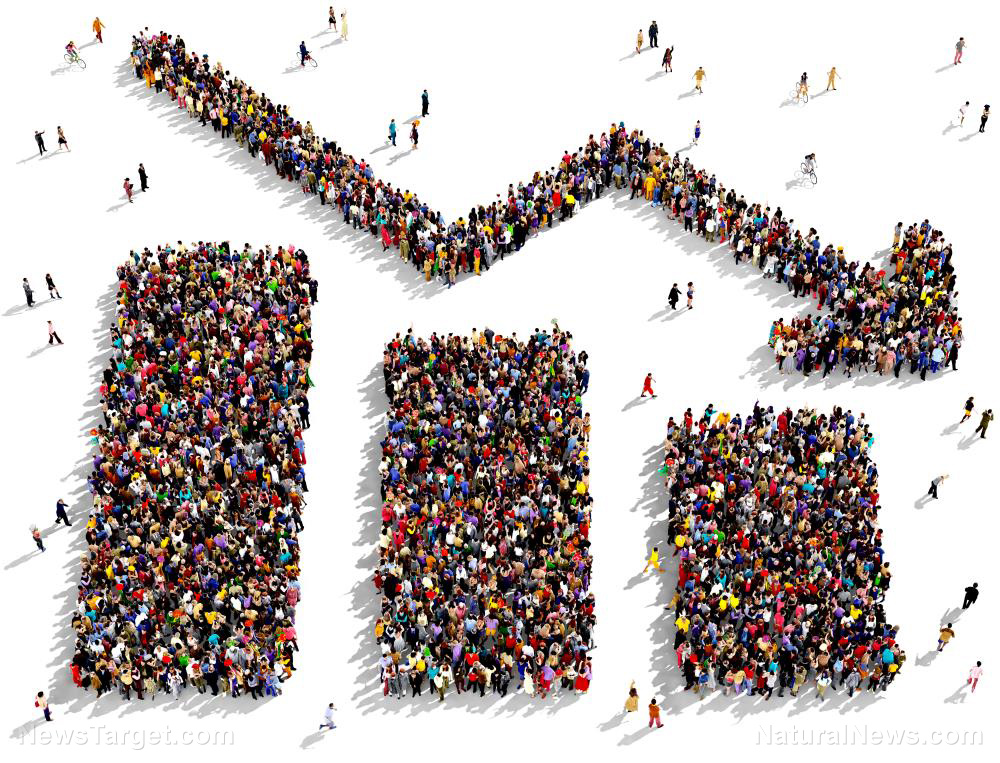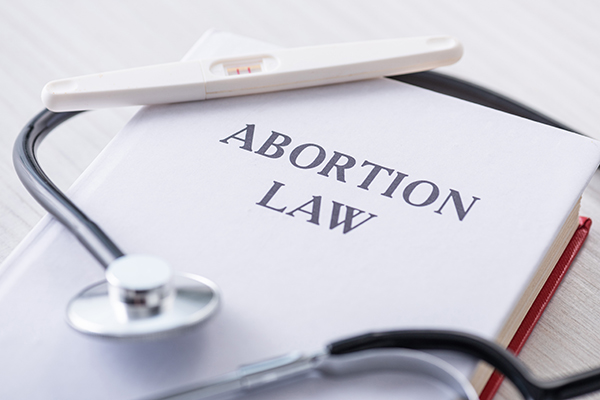Census Bureau: U.S. population projected to begin declining by 2100
11/14/2023 / By Olivia Cook

The Census Bureau predicts that a population decline is coming to the United States.
According to new data released by the Bureau on Thursday, Nov. 9, the number of Americans is likely to start shrinking by the end of the century in 2100. These projections are based on assumptions about future births, deaths and net international migration.
The population is projected to reach a high of nearly 370 million in 2080 but then it will likely start dropping down to 366 million in 2100 – the first to reach so far into the future. That’s only about a 10 percent increase from the population last year.
The Wall Street Journal reported that it is the first time that the Bureau has projected a population decline as part of its main outlook for the coming decades. The report noted that the only time the U.S. had a recorded population decline was in 1918 – when the flu pandemic and deployment abroad of more than a million troops produced a small drop in the estimated population.
The first issued report since 2018, the projections reflect years of declining birth rates, higher death rates because of an aging population and increased reliance on immigration for population growth. (Related: Top 7 ways the Democrats in D.C. plan on REDUCING the POPULATION.)
National population projections this year
A population projection gives a picture of what the future size and structure of the population by age and sex might look like.
To project the future size and composition of the national population, the components of population change – fertility, mortality and net migration – are projections for each birth cohort or persons born in a given year.
As the base for projecting the US population from 2023 to 2100, the 2023 National Population Projection series used the official Census Bureau’s Vintage 2022 estimates of the resident population on July 1, 2022.
Policymakers and program planners rely on population projections to assess future demand for resources, such as food, water and energy, as well as public services, such as health and education.
Census Bureau demographer Sandra Johnson said, “In an ever-changing world, population dynamics is crucial for shaping policies and planning resources.”
Some highlights extracted from the Bureau’s projection include:
Total population
As previously mentioned, the total population for the middle series increases to a peak at 370 million in 2080 and then begins to decline – dropping to 366 million by 2100, compared to the projection for the high-immigration scenario, which increases every year – putting the population at 435 million.
The low-immigration scenario is projected to peak at around 346 million in 2043 and decline thereafter, dropping to 319 million in 2100.
Drivers of population change
Reduced fertility and an aging population result in a natural decrease (mortality) in all projection scenarios. Immigration is projected to become the largest contributor to population growth.
“The U.S. has experienced notable shifts in the components of population change over the last five years. Some of these, like the increases in mortality caused by the Wuhan coronavirus disease (COVID-19) pandemic, are expected to be short-term while others, including the declines in fertility that have persisted for decades, are likely to continue into the future,” Johnson explained. (Related: Depopulation agenda: Government tyranny plus COVID jabs caused more than 13 million DEATHS worldwide, doctor reveals.)
She continued saying, “Incorporating additional years of data on births, deaths and international migration into our projections process resulted in a slower pace of population growth through 2060 than was previously projected.”
The Bureau said the U.S. birth rate was 1.64 births per woman as of 2020. Citing falling domestic birthrates, the Bureau projects that rate to be supplemented by immigration.
According to government estimates, immigration has rebounded after slowing during the pandemic. In January, the Congressional Budget Office (CBO) estimated that 1.3 million people – 500,000 of them lacking in legal status – became U.S. immigrants or were here and became legal permanent residents last year.
Preliminary data revealed that the U.S. birthrate was about 19 percent lower in 2022 than in 2007. In the last year before the pandemic in 2019, death rates remained about nine percent higher. By 2038, deaths would exceed births under the most likely scenario.
Over time, the Bureau projected that immigration will make up a larger portion of population growth.
“The convergence of birth and death rates has boosted the role of immigration and with it, uncertainty about population growth. Immigration is affected by changing laws, wars, natural disasters and economic shifts.”
Age and sex
Continued declines in fertility are projected to shift the age structure of the population so that there will be more adults aged 65 or older compared to children under age 18 by 2029.
The Bureau said nearly 30 percent of the population is projected to be aged 65 or older by 2100, compared to almost 17 percent under age 18. This crossover happens in 2030 in the high-immigration scenario, 2029 in the low-immigration scenario, and 2028 in the zero-immigration scenario.
In 2100, the projected median age for females ranges from 47.7 in the high-immigration scenario to 54.8 in the zero-immigration scenario. For males, the projected values in 2100 range from 45.4 in the high-immigration scenario to 52.5 in the zero-immigration scenario.
Watch the following video about the U.S. population falling to 100 million in 2025.
This video is from the JonasTheProphet channel on Brighteon.com.
More related stories:
Miscarriage, stillbirth rates exploding worldwide as depopulation continues unabated.
DEPOPULATION assault is working: Sperm viability plunges among men.
Sources include:
Submit a correction >>
Tagged Under:
aging population, big government, births, census, Census Bureau, Collapse, deaths, depopulation, Immigration, migrants, national security, Open Borders, population collapse, Projections, prophecy
This article may contain statements that reflect the opinion of the author
RECENT NEWS & ARTICLES
COPYRIGHT © 2017 BIG GOVERNMENT NEWS





















